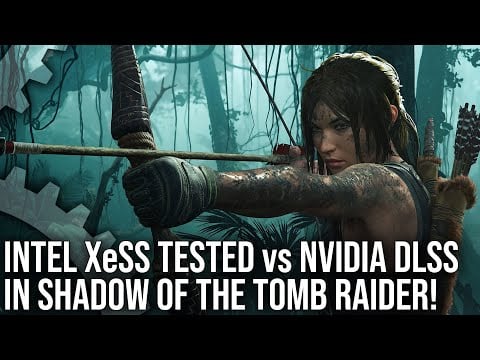Intel’s foray into dedicated graphics with Arc is yet to properly take off, but one other aspect has been examined for the first time. XeSS is Intel’s machine learning-based take on upscaling for games, similar to Nvidia’s DLSS. While XeSS will be supported on Intel’s own graphics, it won’t be exclusive.
Now, the folks over at Digital Foundry have been given early access to examine the tech on the upcoming Intel Arc A770. A limited look it may be, limited to only Shadow of the Tomb Raider, but by all accounts there is promise. It also has issues, but DF’s Alex Battaglia summed it up:
Even with these issues, I would say XeSS is shaping up to be a great success. Like the best upscaling solutions, it can beat the look of native 4K in some scenarios – even in performance mode, which uses a 1080p base image. It is directly competitive with DLSS in scenarios that I consider to be ‘hard mode’ for image reconstruction techniques.
It’s also pointed out that in this particular title, the version of DLSS is a little older. As such a newer title with the latest and greatest could yield different results. On the Arc A770 XeSS introduces a few milliseconds of additional frame time, but at much greater quality versus a native, lower resolution image. Next to DLSS, XeSS is able, it seems, to maintain similar levels of detail and sharpness.
It’s worth watching the full video to see everything. There’s a lot to go through. Issues seen with XeSS include artifacts and flickering, though neither DLSS nor AMD FSR can claim to be immune to issues, either. DLSS seems to handle hair, better, which has been an Nvidia strength for quite some time.
DF has also highlighted that XeSS can use higher base resolutions than some of the other upscalers. At the highest quality setting for XeSS, it uses a 1656p base resolution to upscale to 4K. That’s compared to 1440p on the highest DLSS setting for the same 4K output.
XeSS will be added to a range of titles, but one of the more demanding games yet to be released that will feature it is Gotham Knights. This first look also came from Intel’s own, high-end GPU, so there are questions to be answered on how it will fare on lower-end graphics hardware, including Intel-powered laptops. But it’s a promising start for sure.
Source: Digital Foundry

